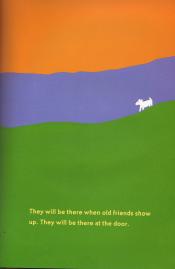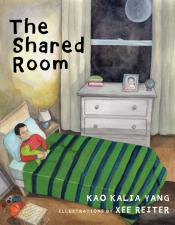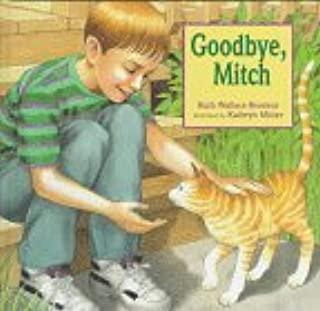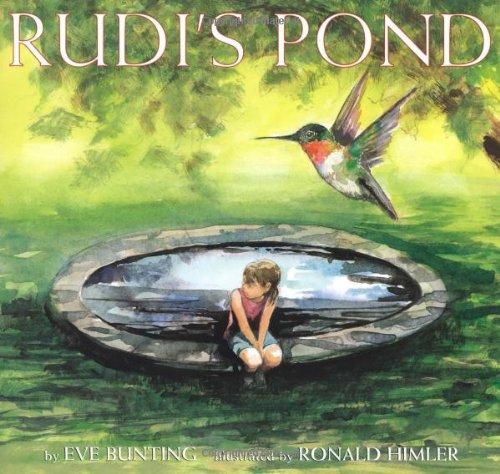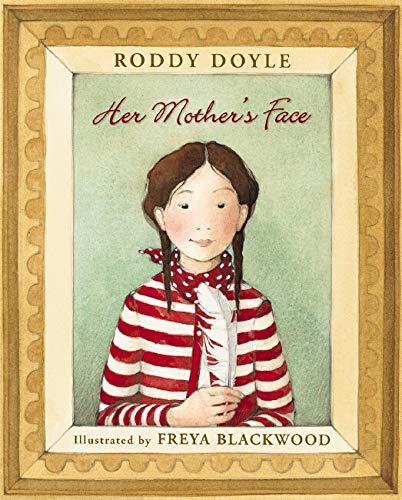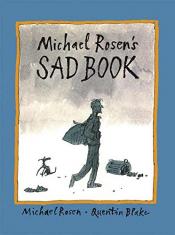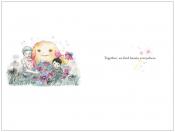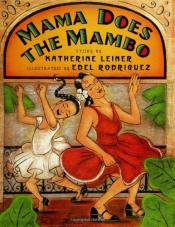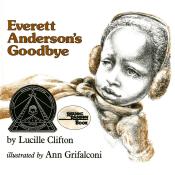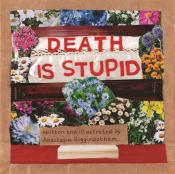Picture books are an essential part of a young child’s life, in part because they help explain and model the world that children will come to know. Children are having brand-new experiences every day, and they do not have the tools adults do to understand how the world works, how they are expected to act, or how to navigate their feelings.
Death is one of the most difficult processes for many of us, and helping a child to understand a death in their lives is, understandably, quite difficult. Since picture books are so often used to help model behavior, parents and caregivers often need a book that is specific to their situation, or to the emotional needs of their child.
With that in mind, we have compiled this recommendation list for children’s picture books that tackle the topic of death. For each book, we are going to be specific about the relationships depicted, the type of death depicted, and other factors that might impact a book's suitability for a child, like the language used and mentions of spirituality and culture. As always, what you choose to check out or read to a child in your care is up to you, but we hope that providing this list will make choosing the right book easier for parents and caregivers.

“Everyone lost someone the day the big wave came.” Based on the true stories of the Otsuchi “wind phone” and the 2011 Tohoku tsunami, this book is about Makio. Makio is a small boy who loses his father to “the big wave.” After the big wave, Makio stops speaking, both sad and angry, until his neighbor, Mr. Hirota, builds a phone booth that is not connected to any phone line. Through the disconnected phone, Mr. Hirota, Makio, and the other residents of the village find the voice to speak to the people they have lost.
The factors: The child character in this book loses a parent in a natural disaster. Death is not explicitly discussed or portrayed; the dead are described as “lost.” The book also depicts adults coping with the deaths of children, spouses, and other relatives, and how death impacts a community.
Dog Heaven or Cat Heaven by Cynthia Rylant
These books are a fantastical look at “dog heaven” and “cat heaven,” places where there are endless treats, angels playing fetch, and other dreamlike scene of the ideal life for a beloved pet.
The factors: Dog Heaven is about what heaven might be like for dogs, and Cat Heaven about heaven for cats. These books do not mention death or dying directly. They do mention the concepts of heaven, God, angels, and in Dog Heaven, the existence of “children angels.” In both books, pets are shown to continue to look after and love their human companions from Heaven.
Bye, Mis’ Lela by Dorothy Carter (ill. Harvey Stevenson)
Sugar Plum, like many children in her neighborhood, has spent her early childhood staying with “Mis’ Lela” while her mother is at work. The summer before Sugar Plum goes to school, Mis’ Lela passes away, and Sugar Plum has to come to terms with her death.
The factors: This book depicts the death of an elderly caregiver who is not a relative. Sugar Plum and her mother are shown attending Mis’ Lela’s funeral service, and death is discussed in plain terms.
The Shared Room by Kao Kalia Yang (ill. Xee Reiter)
“One bedroom was for the mother and the father and the baby sister, one was for the sister who had drowned, and the last one was for himself and his brother.” In the aftermath of his sister’s death, the oldest brother of a family faces the reality of moving into his sister’s old bedroom.
The factors: This book explicitly discusses the death of a child by drowning, through the eyes of her family, seven months after. The book discusses the circumstances of the child’s death, and how the family grieves and remembers the child by visiting her room, watching old videos, and looking at pictures. Death and grief are discussed in plain terms. There is a veiled reference to suicidal ideation in the parents. This book depicts a Hmong American family in Minnesota, and was written and illustrated by Hmong American creators.
Goodbye, Mitch by Ruth Wallace-Brodeur
When Mitch the cat stops eating, Michael must come to terms with the terminal illness of his beloved pet.
The factors: This book depicts the death of a pet via cancer, through the eyes of a child. The book discusses the concept of the pet “being made comfortable,” and the cycle of taking care of an ill animal as it stops eating and becomes weaker. In the book, the child holds his cat as it dies, and is shown holding the cat in the moments after death. Death is discussed in plain terms.
Rudi’s Pond by Eve Bunting (ill. Ronald Himler)
Rudi dies. It isn’t fair, but with the help of her parents and her school, a young girl finds ways to remember him.
The factors: This book is about the death of a child’s young friend from a congenital defect. Illness and death are discussed in plain terms. This book depicts parents and teachers as sources of comfort, trust, and guidance. The book also depicts the child's school and community memorializing the dead child. The book ends with some light spirituality, suggesting the child’s friend still looks after her from the afterlife.
The Death Book by Pernilla Stalfelt
A humorous look at all the little facts about death.
The factors: This book discusses and depicts death in humorous and extremely plain terms. It covers numerous reasons why death occurs, various things people believe about death, religious beliefs around death, funeral and burial practices, and how to remember the dead. There is mention of angels, God, ghosts, vampires, and much more. There are some cartoon-ish depictions of nude people.
Her Mother’s Face by Roddy Doyle (ill. Freya Blackwood)
Siobhán (pronounced shiv-AWN) can’t remember her mother’s face, and her father is preoccupied with his own deep sadness. With the help of a beautiful, mysterious woman, Siobhán figures out how to remember her mother’s face, and her mother, over the long years.
The factors: Set in Dublin, this book depicts a child who lost her mother when she was young. This book depicts a surviving parent struggling with grief and being unable to speak of a dead spouse for several decades. The child meets and talks to the spirit of her dead parent. This book depicts how grief and remembrance can change over time.
Michael Rosen’s Sad Book by Michael Rosen (ill. Quentin Blake)
In a rare autobiographical picture book, adult Michael Rosen talks in a child-friendly way about why he is sad, how it feels, and how he copes.
The factors: Michael Rosen is sad because his son has died, because his mother has died, and because things have changed. Death is discussed in plain terms, but no details of deaths or funerals are discussed, only the sadness that remains. There is discussion of how sadness feels, and ways to combat sadness. There is a veiled reference to “not wanting to be here anymore" as a consequence of loss and grief.
Lasting Love by Caroline Wright (ill. Willow Heath)
When Mama is told she is sick, she brings something special home from the hospital: a creature, a strong creature, that fills their lives with love, even after Mama is gone.
The factors: This book is about the illness and death of a mother from a terminal illness, implied to be cancer. While there is a depiction of an ash scattering, death is discussed in veiled terms, with the mother being “gone.” The mother’s love is depicted as a large, magical creature, which exists after the mother’s death.
The author wrote this book based on her own experiences with a serious cancer diagnosis. (This book could also be paired with the board book A Bubble by Geneviève Castrée, also written by a mother with a serious illness. Castrée's book pictures the mother becoming well, so it may be a good introduction to a parent's serious illness.)
My Father’s Arms Are A Boat by Stein Erik Lunde (ill. Øyvind Torseter)
On a long, snowy night, a boy and his father have trouble sleeping, and they get outside to observe the stars.
The factors: This book is about a child who is anxious about many things, requiring reassurance and physical comfort from his father. The death of the child’s mother is briefly discussed as a “sleep” that she will never wake from. The primary focus is on the comfort the child is given by his father’s arms, and on the emotional connection between a widower and child.
Mama Does the Mambo by Katherine Leiner (ill. Edel Rodriguez)
It has been almost a year since Papa died, and Mama hasn’t danced since then. With Carnival fast approaching, the whole neighborhood expects Mama to dance the mambo again. But with Papa gone, who will Mama have as her dance partner?
The factors: This book is about a child and her mother recovering from the loss of the child’s father. The father’s death is mentioned in plain terms, but the focus is on how mother and child recover emotionally. This book depicts a widowed parent dating again, and the concerns of both mother and child about making sure the dead parent is not simply replaced, ending with an affirmation of the love and connection between parent and child. The book is set in Havana, Cuba and includes Spanish words and phrases.
Everett Anderson’s Goodbye by Lucille Clifton (ill. Ann Grifalconi)
Told in rhyming verse, a boy comes to terms with his father’s death.
The factors: This book portrays the death of a father of a male child. The book is structured around the Kubler-Ross five stages of grief model—denial, anger, bargaining, depression, and acceptance. Death is mentioned in plain terms, but the book primarily focuses on the grief of the child.
Death is Stupid by Anastasia Higginbotham
A frank look at death, Higginbotham portrays a boy’s experiences with his grandmother’s death to teach children about what losing someone is really like.
The factors: This book portrays a boy attending the open-casket, Christian funeral of his grandmother. Using the boy as an example, the book discusses death in extremely plain terms. This book pushes back against the idea of veiled terms like “in a better place,” “at rest,” or “sleeping” for death, instead acknowledging to children that death is unfair and hard to accept. This book encourages a nonspecific spiritual approach to death, including imagining speaking to your dead loved one as a way to remember them. The back of the book includes suggestions for activities and mental exercises to maintain an emotional connection to the deceased.
If these books aren't quite what you're looking for, or if you're just interested in continuing to explore this subject, here are some other books we recommend:
- Cry Heart, But Never Break by Glenn Ringtved (death of grandmother)
- What's the Matter, Marlo? by Andrew Arnold (death of dog)
- The Dead Bird by Margaret Wise Brown(death of bird)
- Stay: A Girl, A Dog, A Bucket List by Kate Klise (elderly dog)
- Saying Goodbye to Lulu by Corinne Demas (death of cat)
- The Day Tiger Rose Said Goodbye by Jane Yolen (death of cat)
